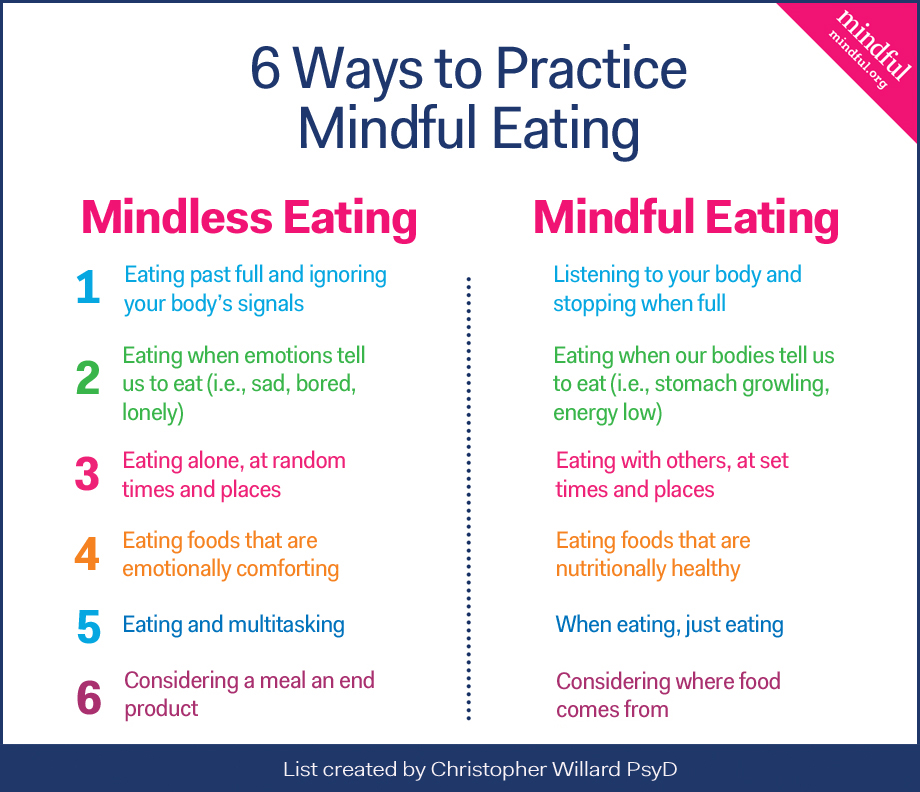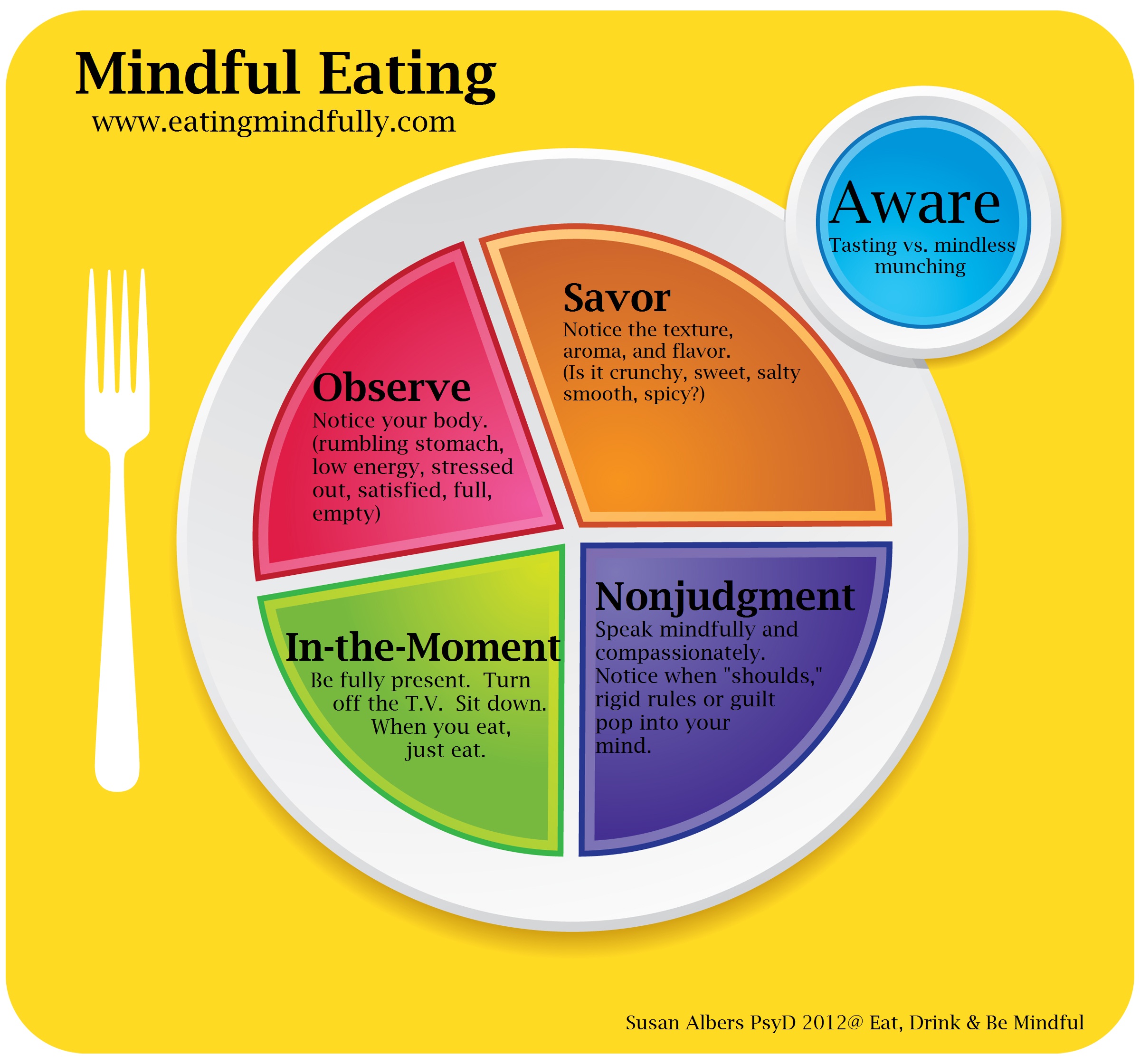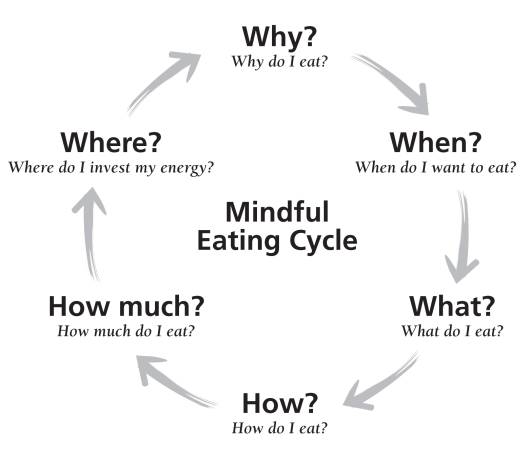What is Mindful Eating?

Mindful eating is the practice of fully being present and aware during meals, allowing yourself to engage with food in a more conscious and intentional way. It involves paying attention to the sensory experience of eating, such as the taste, smell, and texture of the food. By being mindful while eating, you become more attuned to your body’s hunger and fullness cues, making it easier to make healthier choices and avoid overeating. Mindful eating also involves developing a non-judgmental attitude towards food and cultivating a positive relationship with eating.
I Understanding the concept of mindful eating

Understanding the concept of mindful eating is crucial for developing a healthy relationship with food. Mindful eating is about being fully present and aware during meals, paying attention to the sensory experience of eating, and listening to your body’s hunger and fullness cues. It involves slowing down and savoring each bite, without distractions or judgment. By practicing mindful eating, you can cultivate a deeper connection with food and develop a greater understanding of the impact it has on your body and overall well-being. It encourages a more conscious and intentional approach to eating, promoting healthier choices and preventing overeating.
II Benefits of practicing mindful eating

Practicing mindful eating offers numerous benefits for your health and well-being. By being fully present and aware during meals, you can:
- Better manage your weight: Mindful eating helps you recognize true hunger and fullness cues, preventing overeating or emotional eating.
- Improve digestion: By slowing down and savoring each bite, you promote better digestion and nutrient absorption.
- Enhance satisfaction: Mindful eating allows you to fully enjoy your food, leading to increased satisfaction and reduced cravings.
- Develop a healthy relationship with food: By cultivating a deeper connection with your food, you can make more conscious and intentional choices that support your overall well-being.
The Basics of Mindful Eating

When it comes to mindful eating, there are a few basic principles to keep in mind. First, listen to your body’s hunger and fullness cues. Pay attention to when you’re truly hungry and when you’re comfortably full. This will help you eat in a way that satisfies your body’s needs without overeating.
Next, slow down and savor each bite. Take the time to chew your food thoroughly and really taste the flavors. This not only enhances your enjoyment of the meal, but also promotes better digestion and nutrient absorption.
By following these basic principles, you can start to develop a healthier relationship with food and make more conscious choices that support your well-being.
I Listening to your body’s hunger and fullness cues

Listen to your body’s hunger and fullness cues by paying attention to your internal signals. Before eating, take a moment to assess your hunger level on a scale from 1 to 10. Aim to eat when you are at a level 3 or 4, indicating mild hunger. During the meal, practice mindful eating by checking in with your body throughout. Pause midway to assess your fullness level. Aim to stop eating when you are comfortably satisfied, around a level 6 or 7. It’s important to honor your body’s cues and avoid overeating.
II Slowing down and savoring each bite

When practicing mindful eating, it’s important to slow down and savor each bite. Take your time to chew your food thoroughly and fully experience the flavors and textures. By slowing down, you allow yourself to fully connect with your meal and enjoy the eating experience. This also gives your body time to register feelings of satisfaction and fullness. Avoid rushing through your meal or multitasking while eating. Instead, focus on the present moment and appreciate the nourishment and pleasure that each bite provides.
Techniques for Mindful Eating

When practicing mindful eating, there are several techniques you can use to develop a healthier relationship with food. Here are some effective techniques to try:
- Mindful meal planning and preparation: Take the time to plan your meals and prepare them with mindfulness. Choose nutritious ingredients and savor the process of cooking.
- Mindful eating while dining out: When eating out, pay attention to portion sizes and choose menu items that align with your health goals. Take your time to eat slowly and listen to your body’s hunger and fullness cues.
Remember, the goal is to be present in the moment and fully engage with the experience of eating. By incorporating these techniques, you can develop a more mindful approach to your meals.
I Mindful of meal planning and preparation

When it comes to developing a healthy relationship with food, mindful meal planning and preparation are essential. Start by taking the time to plan your meals mindfully. This involves choosing nutritious ingredients that will nourish your body and support your health goals. As you prepare your meals, embrace the process with mindfulness. Focus on the smells, textures, and colors of the food. Engage all your senses and savor each moment. By approaching meal planning and preparation in a mindful way, you can foster a deeper connection with your food and enhance your overall eating experience.
II Mindful eating while dining out

When dining out, it can be challenging to maintain mindful eating habits, but it is still possible. Here are some tips for practicing mindfulness while eating out:
- Choose a restaurant that offers healthy options: Look for restaurants that prioritize fresh, nutrient-rich ingredients in their dishes.
- Read the menu mindfully: Take the time to read the menu carefully and choose a dish that aligns with your health goals.
- Pay attention to portion sizes: Restaurants often serve larger portions than necessary. Listen to your body’s hunger and fullness cues and only eat until you are satisfied, not overly full.
- Eat slowly and savor each bite: Take your time to fully enjoy the flavors and textures of your food. Put down your utensils between bites and engage in conversation to pace yourself.
By practicing mindful eating while dining out, you can make healthier choices and fully appreciate your dining experience.
Building a Healthy Relationship with Food

Building a healthy relationship with food is crucial for your overall well-being. It involves developing a positive mindset towards food and embracing a balanced approach to eating. Here are some tips to help you build a healthy relationship with food:
- Focus on nourishment: Instead of viewing food as good or bad, think about how it can nourish your body and provide the necessary nutrients.
- Practice self-compassion: Be kind to yourself and avoid self-judgment when it comes to food choices. Remember that it’s about progress, not perfection.
- Tune into your body’s cues: Listen to your body’s hunger and fullness signals. Eat when you’re hungry and stop when you’re satisfied.
- Embrace mindful eating: Engage all your senses while eating, savor each bite, and eat slowly. This helps you appreciate the flavors and textures of your food.
- Cultivate a positive food environment: Surround yourself with foods that support your health goals. Stock your kitchen with nourishing options and minimize the presence of processed and unhealthy foods.
By building a healthy relationship with food, you can enjoy eating without guilt, make nutritious choices, and prioritize your well-being.
I Identifying and challenging food-related thoughts and beliefs

Identifying and challenging food-related thoughts and beliefs is an important step in developing a healthy relationship with food. Start by becoming aware of any negative or distorted beliefs you may have about food, such as labeling certain foods as “good” or “bad.” Challenge these beliefs by questioning their validity and considering alternative perspectives. Remind yourself that all foods can be enjoyed in moderation and that there are no inherently “good” or “bad” foods. Focus on nourishing your body and making choices that support your overall well-being.
II Letting go of food guilt and judgments

Letting go of food guilt and judgments is essential for developing a healthy relationship with food. Instead of attaching moral value to what you eat, focus on nourishing your body and enjoying the eating experience. Challenge any negative thoughts or guilt that arise around food by reminding yourself that all foods can be part of a balanced diet. Practice self-compassion and forgiveness if you veer off track and remember that one indulgent meal or snack does not define your overall eating habits. Embrace a non-judgmental mindset and prioritize your well-being above external judgments.
Mindful Eating and Emotional Eating

Mindful eating can also be a helpful tool for managing emotional eating. Emotional eating is when we use food as a way to cope with our emotions, often in response to stress, sadness, or even boredom. By practicing mindfulness, we can become more aware of our emotions and the triggers that lead us to overeat. Mindful eating techniques, such as deep breathing and body scans, can help us pause and evaluate whether our hunger is physical or emotional. Instead of turning to food, we can find alternative ways to soothe ourselves, such as engaging in self-care activities or reaching out for support from loved ones. By developing a stronger connection between our emotions and our eating habits, we can make more intentional choices that support our overall well-being.
I Recognizing emotional triggers that lead to overeating

Recognizing emotional triggers that lead to overeating is an important step in developing a healthier relationship with food. Take time to pause and reflect on your emotions when you find yourself reaching for food. Are you feeling stressed, sad, or bored? Are you using food as a way to cope with these emotions? By becoming aware of these triggers, you can start to develop strategies to deal with these emotions in a more constructive way. Consider alternative activities, such as journaling, going for a walk, or talking to a friend, to help manage your emotions without turning to food.
II Using mindfulness techniques to manage emotional eating

When it comes to managing emotional eating, mindfulness techniques can be incredibly helpful. Here are a few strategies that can assist you in managing emotional eating through mindfulness:
- Awareness: Become aware of your emotions, thoughts, and physical sensations when you reach for food. Take a moment to pause and ask yourself if you are truly hungry or if you are eating out of boredom, stress, or sadness.
- Mindful breathing: Practice deep breathing exercises to calm and center yourself before reaching for food. This can help you gain clarity and make more mindful choices.
- Slow down: Take your time while eating. Chew slowly and savor each bite. Notice the taste, texture, and smell of your food. Engaging your senses can help you connect with your food and prevent mindless overeating.
- Mindful eating rituals: Create a ritual around your meals, such as setting the table nicely or saying a gratitude prayer before eating. These rituals can help you bring more mindfulness and intention to your eating experience.
- Non-judgmental observation: Instead of judging yourself for emotional eating, practice self-compassion and observe your thoughts and emotions without attaching judgment. This can help you gain insight into your eating patterns and make healthier choices in the future.
By incorporating these mindfulness techniques into your daily life, you can develop a healthier relationship with food and better manage emotional eating. Remember, it’s a journey, and consistency is key.
Conclusion and Next Steps

In conclusion, mindful eating is a powerful practice that can help you develop a healthier relationship with food. By being present in the moment and paying attention to your body’s hunger and fullness cues, you can make more mindful choices and avoid mindless overeating. The benefits of practicing mindful eating include improved digestion, increased enjoyment of food, and better overall well-being. To make mindful eating a sustainable habit, continue to practice awareness, slow down while eating, and challenge any negative thoughts or judgments around food. Remember, the journey to cultivating a healthy relationship with food is ongoing, so be patient and kind to yourself throughout the process.
I Summary of mindful eating techniques

In summary, mindful eating techniques involve being present and aware of your eating habits. This includes listening to your body’s hunger and fullness cues, slowing down while eating, and savoring each bite. Mindful meal planning and preparation can also help you make healthier choices. When dining out, practicing mindful eating involves being mindful of portion sizes and making conscious choices. Building a healthy relationship with food involves challenging negative thoughts and judgments, letting go of food guilt, and practicing self-compassion. By incorporating these techniques into your daily life, you can develop a healthy and mindful relationship with food.
II Making mindful eating a sustainable habit

To make mindful eating a sustainable habit, it’s important to be consistent and patient with yourself. Here are some tips to help you maintain mindful eating in the long term:
- Practice mindfulness in other areas of your life: Cultivate a mindful mindset not just during meals, but throughout your day. This will help you stay in tune with your body’s needs and make healthier choices overall.
- Create a supportive environment: Surround yourself with people who support your mindful eating goals and remove any distractions that may lead to mindless eating.
- Stay committed to self-care: Prioritize self-care practices such as regular exercise, getting enough sleep, and managing stress. When you take care of yourself in other areas, you’re more likely to make mindful choices when it comes to eating.
- Continuously educate yourself: Stay informed about the benefits of mindful eating and read up on new techniques and strategies. This will keep you motivated and inspired to continue practicing mindful eating.
Remember, developing a sustainable mindful eating habit takes time and practice. Be patient with yourself and celebrate your progress along the way. Enjoy the journey of cultivating a healthy and mindful relationship with food.

